Bill Gates
Latest
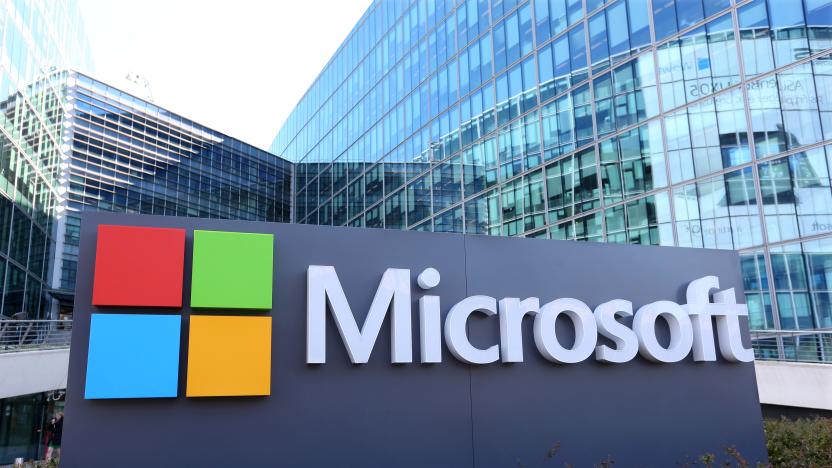
Microsoft opens a third-party review into its harassment and discrimination policies
Microsoft has hired a third -party law firm to review its policies on sexual harassment and gender discrimination policies.
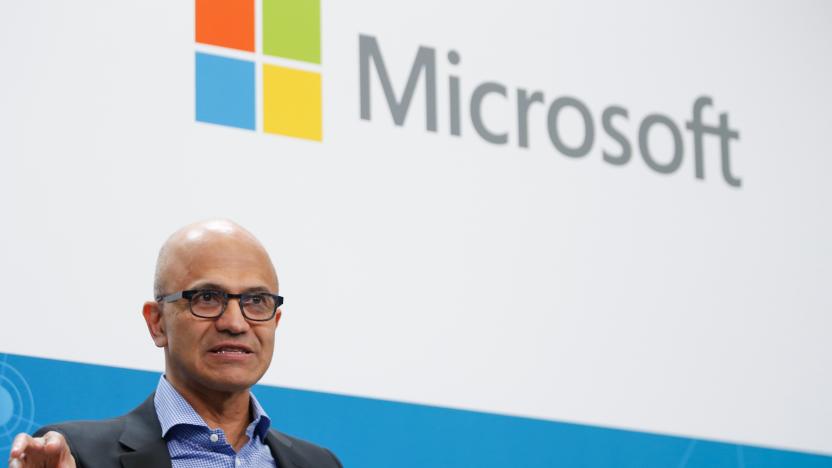
Microsoft appoints CEO Satya Nadella as chairman
Microsoft CEO Satya Nadella has been appointed to the role of board chair.
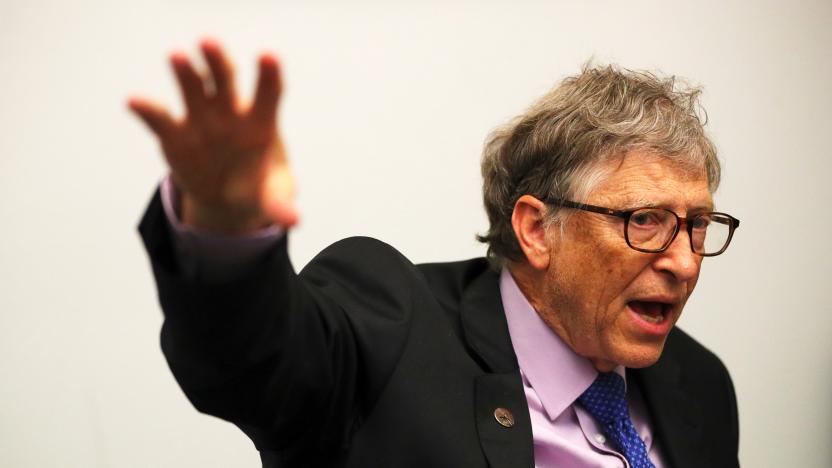
Hitting the Books: Bill Gates on why we can't have electric airplanes
In his new book, tech luminary Bill Gates lays out his comprehensive plan to halt the oncoming environmental apocalypse, blunt the effects of human-caused climate change, and keep Earth habitable for the next generation.

Bill Gates steps down from Microsoft's board of directors
Amid the spreading outbreak of COVID-19, Engadget reader Bill Gates has apparently decided "to dedicate more time to his philanthropic priorities including global health, development, education, and his increasing engagement in tackling climate change." He's stepping down from the board of directors at the company he co-founded in 1975 as well as his position on the board of Berkshire Hathaway, but will still be a "technology advisor" to current CEO Satya Nadella and other executives. Gates posted a statement on LinkedIn that said "I have made the decision to step down from both of the public boards on which I serve – Microsoft and Berkshire Hathaway – to dedicate more time to philanthropic priorities including global health and development, education, and my increasing engagement in tackling climate change. The leadership at the Berkshire companies and Microsoft has never been stronger, so the time is right to take this step."

Solar energy 'breakthrough' could replace fossil fuels in some industries
If solar energy is truly going to take over from fossil fuels, it needs to be hot enough for not only generating power, but replacing industrial processes outright -- and even the 1,049F of the best solar concentrator systems wouldn't cut it. Heliogen, however, may have finally cracked that barrier. The Bill Gates-backed startup has successfully concentrated solar energy at "breakthrough" temperatures above 1,832F, making it toasty enough to replace fossil fuels for industrial tasks like producing cement or steel.

Bill Gates (still) doesn't think regulators should break up Big Tech
Bill Gates is unsurprisingly very familiar with antitrust regulations of large tech companies, so how does he feel about the US government's ongoing competition review? He's not a fan -- though not necessarily for the reasons you might think. The former Microsoft CEO told Bloomberg in an interview that it was better to correct the specific practices than to break the companies up. If you split them, you now have two companies "doing the bad thing," he said. He wasn't completely averse to the concept, but there were a "narrow" set of circumstances where it would work.

Watch the first trailer for Netflix's Bill Gates docuseries
Netflix has released the first trailer for its upcoming three-part Bill Gates documentary, Inside Bill's Brain: Decoding Bill Gates. The trailer shows An Inconvenient Truth director Davis Guggenheim using interviews and a combination of archival and newly shot footage to tell Gates' story.
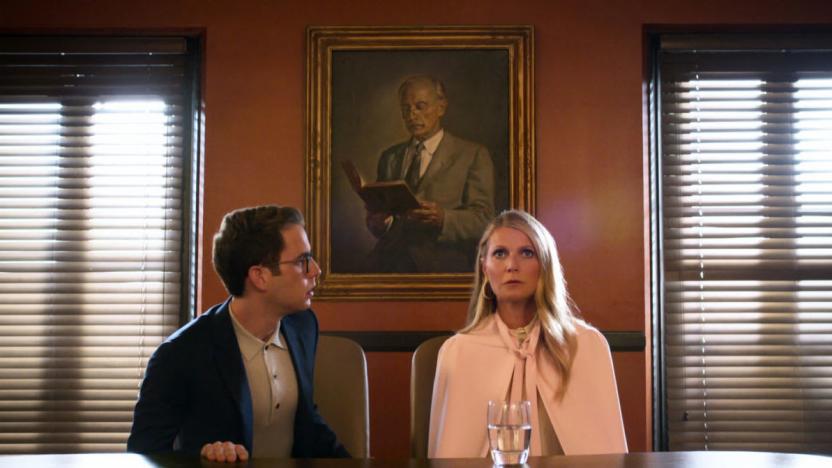
What's coming to Netflix in September: 'The Politician' and 'The Spy'
We're edging into the final embers of the summer and as the weather starts to turn for many of us, we'll perhaps find ourselves curled up on the couch a little more often to stream some movies, shows and whatever else happens to be on offer. To wit, Netflix has revealed much of what's coming to its platform in September.
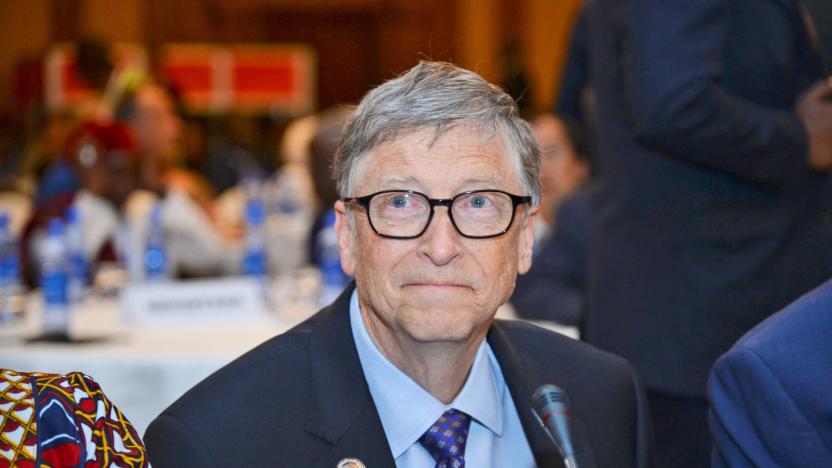
Netflix will peer inside Bill Gates' mind with a new docuseries
An upcoming Netflix docuseries will offer some insight into Bill Gates's mind as he tries to solve some of the planet's biggest problems. The three-part series, Inside Bill's Brain: Decoding Bill Gates, "offers an unprecedented peek inside the mind of the celebrated tech visionary, business leader, and philanthropist," Netflix said. It includes interviews with Gates and his wife Melinda, as well as their loved ones and philanthropy and business partners.
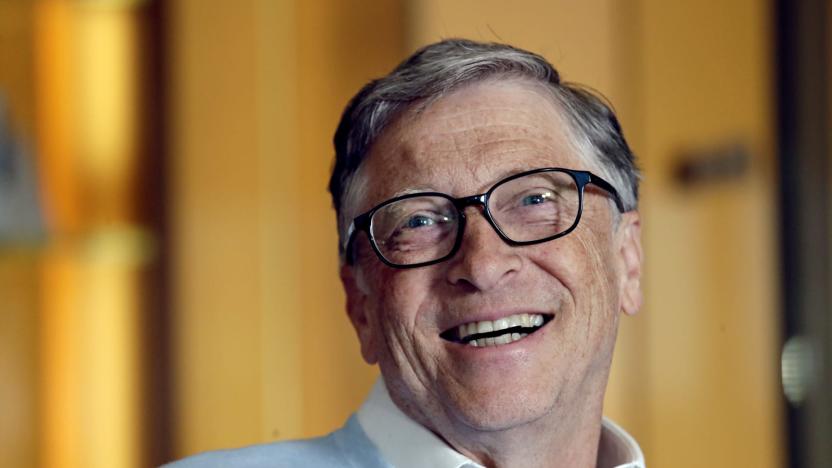
Bill Gates claims his ‘greatest mistake’ was not beating Android
Bill Gates has spoken candidly about his regrets as the leader of Microsoft, most particularly the company's attempts to build a dominant mobile OS. As reported by The Verge, during an interview at venture capital firm Village Global, Gates said "the greatest mistake ever is whatever mismanagement I engaged in that caused Microsoft not to be what Android is."

Bill Gates doesn't get why we're not worried about super intelligent AI
Elon Musk and Stephen Hawking have brought up the potential dangers of super intelligent AI several times over the past few years (Musk even donated $10 million toward cautious AI research), but now Bill Gates is also getting into the mix. In his Reddit "AmA" Q&A session today, Gates made it clear that he agrees with Musk's stance, which basically amounts to being very careful about how we approach the rise of intelligent machines: I am in the camp that is concerned about super intelligence. First the machines will do a lot of jobs for us and not be super intelligent. That should be positive if we manage it well. A few decades after that though, the intelligence is strong enough to be a concern. I agree with Elon Musk and some others on this and don't understand why some people are not concerned.

Watch Bill Gates drink water made from human waste
Since stepping down as Microsoft CEO, Bill Gates has been hard at work trying to tackle the world's biggest health problems. One promising project that's caught his eye is the Omniprocessor, a huge machine that converts sewer sludge (yes, that means human waste) into clean drinking water, ash and electricity. Of course, Gates was keen to visit one of the facilities to see, and more importantly taste, the results for himself.

Bill Gates: Apple Pay is "fantastic" and a "real contribution"
Bill Gates yesterday sat down for an insightful interview with Erik Schatzker of Bloomberg where the Microsoft co-founder discussed, amongst other topics, his efforts to leverage the ubiquity of cellphones to help bring affordable and digital banking options to the world's poorest countries. Midway through the interview, the topic turned briefly to Apple Pay, Apple's upcoming mobile payments platform. Gates had positive things to say about Apple Pay, calling it a "real contribution." Well, Apple Pay's a great example of how a cell phone that identifies its user in a pretty strong way lets you make a transaction that should be very, very inexpensive. So the fact that in any application I can buy something, that's fantastic. The fact I don't need a physical card anymore, I just do that transaction and you're going to be quite sure about who it is on the other end, that is a real contribution. Gates further added that it's only a matter of time before similar functionality becomes available across all mobile platforms. And all the platforms, whether it's Apple's or Google's or Microsoft, you'll see this payment capability get built in. That's built on industry standard protocols, NFC. And these companies have all participated in getting those going. Apple will help make sure it gets to critical mass for all the devices. As we noted yesterday, the broad mechanisms that govern Apple Pay aren't built on proprietary Apple technologies. Rather, Apple Pay adheres to an emerging industry standard regarding token-based mobile payments and, as a result, there's nothing to prevent companies like Google and Microsoft from implementing similarly secure mobile payment platforms of their own in the near future. The full Gates interview can be viewed below: via Business Insider

What ever became of Microsoft's $150 million investment in Apple?
In August of 1997, Apple and Microsoft decided to put the past behind them and focus on the future. At that year's Macworld event, Steve Jobs and Bill Gates announced that the two companies had entered into a historic agreement. In addition to agreeing to a broad patent cross-licensing agreement, Microsoft promised to support Microsoft Office for the Mac for 5 years while Apple agreed to make Internet Explorer the default web browser on the Mac. Microsoft also promised to invest approximately $150 million for shares of Apple non-voting preferred stock. Though the Mac faithful at the time were wary of Microsoft, Steve Jobs at the time famously explained that "we have to let go of this notion that for Apple to win, Microsoft has to lose." The deal between the two companies was mutually beneficial from every angle. Apple got some much needed cash while Microsoft was able to keep a weakened competitor afloat, thereby alleviating concerns about the company's monopolistic power. Since then, Apple has enjoyed an unparalleled resurgence, ascending from the brink of bankruptcy to one of the most valuable companies on the planet. That being the case, one can only wonder: What ever became of Microsoft's $150 million investment? Here's the scoop. Microsoft's $150 million investment netted the company 150,000 shares of preferred stock, convertable to common shares of Apple stock at a price of $8.25, redeemable after a three year period. By 2001, Microsoft had converted all of its shares into common stock, netting the company approximately 18.1 million shares. But by 2003, Microsoft had sold its entire stake in Apple. But what if the folks at Redmond decided to hold on to their Apple shares? How much would they be worth today? Well, Apple stock split on a 2-for-1 basis twice since the agreement, once in June of 2000 and again in 2005. At the time of the first split, the three year window had not yet passed so let's just assume that Microsoft's shares would have split only once. That would have given the company 36.2 million shares. At the close of trading on Monday, shares of Apple were trading at $604.59. If Microsoft still had their shares, they'd be worth $21.86 billion, a hell of a return for the initial outlay of $150 million. Note that this isn't meant to disparage Microsoft, but rather to point out how incredibly high Apple's share price has been. And besides, the influx of cash was never about Microsoft pursuing an investment opportunity.

When Steve Jobs played Dating Game host with Bill Gates as a contestant [Video]
Thirty years ago last Friday, Steve Jobs introduced the Macintosh to the world. About three months before that, Jobs took the stage at an Apple sales conference where he hosted the "Macintosh Software Dating Game." As revolutionary as the Mac was, it was important for Apple to get the support of big software players in order to see the platform to truly take off. That said, the game's three contestants represented software companies that were extremely important in the '80s: Fred Gibbons from the Software Publishing Corporation, Mitchel Kapor from Lotus and a very young Bill Gates, who was wearing some comically big glasses. This video is where Gates famously heaps praise upon the Mac. When Jobs asks him if the Mac will be the third industry standard, Gates replies: Well to create a new standard it takes something that's not just a little bit different. It takes something that's really new and really captures people's imagination. And the Macintosh, of all the machines I've ever seen, is the only one that meets that standard. Earlier in the video, Gates said that Microsoft in 1984 expects to get half of its revenues from Macintosh software, a statement which elicited a ridiculously giddy smile from Jobs. Now what's interesting is that Jobs had given Gates early access to the Mac in exchange for a promise that Microsoft wouldn't ship "any software that used a mouse until at least one year after the first shipment of the Macintosh." That tidbit comes straight from Andy Hertzfeld, one of the original Mac team members. Just one month later, however, Microsoft demoed Windows 1.0, mouse and all, at Comdex 1983. According to Hertzfeld, Jobs "went ballistic" when he found out. And to think, Jobs and Gates were as thick as thieves just a few weeks earlier. Following what Jobs likely categorized as a betrayal was a Jobs/Gates confrontation you may have heard before, with Gates defends Microsoft's actions. As Hertzfeld recalls it: "You're ripping us off!" Steve shouted, raising his voice even higher. "I trusted you, and now you're stealing from us!" But Bill Gates just stood there coolly, looking Steve directly in the eye, before starting to speak in his squeaky voice. "Well, Steve, I think there's more than one way of looking at it. I think it's more like we both had this rich neighbor named Xerox and I broke into his house to steal the TV set and found out that you had already stolen it." Incidentally, before Jobs and Gates took the stage at the 2007 AllThingsD Conference, the dating game video clip was shown to the entire audience.

How to make a CES keynote
Last night, director Michael Bay made an abrupt stage exit during Samsung's day zero CES press conference. It was awkward, but little more than a square of toilet paper on the bottom of a tennis shoe compared to last year's Qualcomm keynote. A bizarre mix of stilted theatrics, celebrity appearances and product demos, the presentation was like nothing we'd ever seen -- until we took a look back. Qualcomm may have jacked its keynote up on steroids, but many of the tricks it pulled out were already tried-and-true standards. As Sony's Kaz Hirai prepares to kick things off at CES 2014 this morning, we reflect on 20-plus years of innovative speeches, futuristic predictions and just plain strange behavior. This is how you make a CES keynote.

Microsoft: Steve Ballmer stepping down within a year
One thing's for sure: we'll certainly miss keynote dances and chants of, "Developers! Developers! Developers!" when Steve Ballmer steps down from his job as the head of Microsoft some time within the next 12 months -- no matter who the John Thompson-chaired succession committee picks to fill his shoes. There aren't a ton of details regarding the decision at the moment -- though a press release issued by the company (which you can find in all of PR speak glory below) is certainly positioning the move as voluntary on Ballmer's part, stating that the exec, "has decided to retire." No direct replacement has been lined up, and as such, he'll remain on-board as CEO until the committee finds the right person. Along with Thompson, Bill Gates, Chuck Noski and Steve Luczo will also take part in the search. Gates had some nice things to say about his successor and old pal, "We're fortunate to have Steve in his role until the new CEO assumes these duties." For his part, Ballmer continues to sound bullish when it comes to the company's future, "there is never a perfect time for this type of transition, but now is the right time. We have embarked on a new strategy with a new organization and we have an amazing Senior Leadership Team. My original thoughts on timing would have had my retirement happen in the middle of our company's transformation to a devices and services company. We need a CEO who will be here longer term for this new direction." Update: Well, ask and ye shall receive. Just like that, Microsoft has revealed Ballmer's "internal email" to the staff. We've included that below, just under the aforementioned press release. The opening of the letter is comprised of the same quote Microsoft issued in this morning's release, as well as, interestingly, a link to press release itself. Ballmer goes on to praise current senior leadership and adds that the company has managed to balloon from "$7.5 million to nearly $78 billion," since the 30 staff member days when he first joined up. The note doesn't shed much more additional light on any future plans, though the executive does add that he will "[continue] as one of Microsoft's largest owners." The exit, he explains is "emotional" and "difficult." No doubt there will be much dancing and shouting in the months to come. Update 2: The Seattle Times scored interviews with Ballmer and Thompson, revealing a couple of tidbits. First, Thompson notes that the CEO will, indeed, have some input on choosing his successor. In fully reflective mode, Ballmer (not shockingly, perhaps) admits that Vista was his biggest disappointment during his tenure. He also added that he plans to stay in Seattle post-retirement, so that tropical island paradise will have to wait. Also, as plenty have noted before us, the Wall Street reaction to news has been been initially fairly positive, so read into that what you will.

Origin Stories: Steve Sande
I certainly didn't start my career with plans to become a blogger and editor at one of the world's most active Apple websites. When I was a child dreaming about a future career path, computer science barely registered on the "What I want to do when I grow up" list since only corporations owned room-sized mainframes at that time and there was no such thing as a home computer. The first time I had any physical contact with a computer was in 8th grade in Aurora, Colorado in the Apollo moon landing year of 1969. The Aurora Public Schools had purchased a Data General Nova (see console photo of a similar model at top of this post) in that year for accounting and scheduling purposes, and some brilliant person came up with the idea of buying some Teletypes that could be used as dialup terminals to allow personnel at the schools to access the main computer remotely. Well, the administrators and teachers at the school weren't all that interested in computers, so guess who started using the Teletypes and Nova to learn how to program in BASIC? The students. Since they wouldn't let us save our programs to paper tape (that would come in about two or three years), any programs we ran were usually quite short out of necessity – we'd type 'em in, run them, try to figure out what the TOO MANY NESTED GOSUBS error meant, and then start all over again. It was fun, but frustrating with no real way to store the programs permanently. In 9th and 10th grade, I was only able to play rarely with the Nova or whatever computer they may have purchased as an upgrade. But when the school announced in 11th grade that the regular algebra class would also be offered in a "computer algebra" version providing access to the school system's minicomputer, I jumped on the opportunity to have a full semester of working with ... the future! Things were a little better at that point. We could save our programs out on paper tape, kind of the "floppy disk" of the era. I think part of the reason we wanted to save to paper tape was that the tape punch created some very good confetti for high school football games... About this time I became very interested in two things; transportation engineering and writing. I had a wonderful high school English teacher by the name of David Faull (still alive and kicking) who really taught me how to write, something I'd need to do in college in those pesky elective courses. I had decided to go into Civil Engineering, and was accepted at the University of Colorado at Boulder. Every engineering student at the time had to take an introductory computer class – CS 101 – in which they were introduced to two things: punch card input and FORTRAN IV. There was nothing worse than sitting down at a keypunch machine with a handwritten FORTRAN coding form, typing in several hundred cards, all of which needed to be read by a machine in order and without typos for your program to run. I can recall hearing of several computer science grad students who had nearly committed suicide after having ultra-long programs scattered to the wind when they accidentally dropped boxes of punch cards... One of my best high school buddies, Rick Brownson, was a student at CU at the same time in the Electrical Engineering department, and I recall that in 1976 he introduced me to an amazing game –- Lunar Lander –- that displayed vector graphics in real time onto a round green-screen terminal. We wasted many a weekend hour playing that game in one of the EE computer labs. Rick also introduced me to the nascent world of personal computing around that time, as he and I soldered chips into a MITS Altair 8800 kit in late 1975. I really wasn't all that impressed with the Altair, since when we finished it there was no way for us to connect it to a display (usually an old TV), and we had no keyboard for it. So we flipped switches on the front of the device to enter 8080 opcodes and then looked at the LEDs to see the results. I remember taking a weekend drive to Albuquerque, New Mexico in 1976 to go to a Altair convention of some sorts; the highlight was getting a pirated copy of Bill Gates' Altair BASIC on paper tape from another attendee. At the time I graduated from engineering school in 1978, word was getting out about Apple, but at the time I really didn't see any reason to buy a computer. Even while I was working in my first job and going to grad school, I refused to buy a computer. When I was able to get a Commodore VIC-20 for about $300 I bought one, then when Commodore reduced the price on the C-64 to about $250 the next week, I returned the VIC-20, got a refund, and picked up a Commodore 64. After a short amount of time I found myself hooked. I bought an Epson printer, got the cassette tape drive, and bought the height of communications technology at the time – a 300 baud modem. I quickly found myself on some of the early bulletin board systems of the time. But the Commodore 64 wasn't a "real computer", so when IBM compatible devices started hitting the market I went out and bought a Sanyo MBC-555 PC clone complete with two floppy drives (a Sanyo MBC-550 with only one floppy is shown below)! This is where I got my first introduction to business software, with WordStar as a word processor and CalcStar as a spreadsheet. At this time, I was working for a natural gas pipeline company called WestGas. The company was a subsidiary of a larger electric and gas utility (Public Service Company of Colorado, now part of Xcel Energy), and as a subsidiary we had of control over our destiny. In the fall of 1983, the Vice President of our company came to me to see if I would perform a study of possible uses for personal computers in our company and create a five-year plan to budget the introduction of those devices, so I jumped to the task. Everything was based on costs and benefits, and a calculated rate of return on the investment in IT. In retrospect, a lot of my numbers were probably quite suspect, as they were based on estimates of time savings that most likely never occurred... The final study saw a need for no more than about 15 PCs over the next five years as well as a handful of dedicated IBM DisplayWriter word processors. About the time that my study was completed, there was a lot of speculation in the computer world about Apple's forthcoming Macintosh. I was interested in seeing one, so a few days after they were introduced my boss and I went over to a Nynex Business Center store to take a look. While the mouse, the bitmapped display, and the 3.5" floppy drive were all amazing, the lack of memory (128K) was a real turnoff. Still, I felt as if I had seen the future, and I vowed to get myself a Mac if they ever built a model with more RAM. Towards the end of the year Apple introduced the 512K "Fat Mac", and the company was doing a "Test Drive A Mac" promotion where you filled out loan paperwork, took a Mac home to use for about three days, and if you decided you wanted to keep it they processed the loan. Having the Mac at home really made me fall in love with it, so in December of 1984 I bought my first Mac. Being enthralled with the Mac, I started lugging it with me to work. By this point I was the supervisor of a group called "Special Projects", and my team was charged with a number of things: regulatory compliance, studies, project management, and now IT. Pretty quickly, my co-workers got began to turn into Mac fans, and I started tweaking the five year plan to buy fewer PCs and more Macs. I was also going to a lot of Mac User Group meetings in those days; that was the place to really try out software, as most everyone would bring boxes of floppies as well as the original disks for new applications they had purchased. Copying was rampant, but I don't remember anyone doing outright pirating; if you tried a program and liked it, you'd end up buying it. That was the case for me in 1985 when I tried out a copy of Aldus Pagemaker (the first "professional" page layout application) and then bought the application. At one point, I bragged to our financial manager that I could use the app to lay out our subsidiary's annual report at a much lower cost than sending it out to a traditional printshop; he called my bluff and for the next month I worked with the very buggy 1.0 software to create the report. In the end, I was successful and the finance department decided to get Macs for everyone. In a few more years, the engineering role ended for me and I was a full-time IT manager. Starting in 1987 and through 1994, I attended Macworld Expo in San Francisco. From about 1990 to 1994, I also went to the Apple WorldWide Developer Conference, which was held in San Jose at that point. These were the years of trying to get a new Mac OS off the ground, the intro of the Newton MessagePad, the MPW vs. CodeWarrior battles, and extremely boring keynotes by such luminaries as Michael Spindler and Gil Amelio. I also spent a lot of time using Pagemaker to create printed newsletters for WestGas and for a number of groups I was a member of. While that was a bit of work that I never really ended up getting paid for, it taught me a lot about design, layout, printing, and writing. From 1986 to 1994, I also ran a Mac bulletin board system known as MAGIC (Mac And [Apple II] GS Information Center). This started off on my original Mac 512, and by the time I quit running the BBS and moved to a website, it was a three-phone-line setup running on two networked Macs Including my favorite Mac of all time, a Mac IIcx. The BBS was the "official site" for the MacinTech Users Group, a MUG that's still going strong to this day. My first website was PDAntic.com, a play on John Sculley's acronym for the Newton – Personal Digital Assistant – and the fact that my wife often refers to me as being pedantic. I chose to run the site with news posts written in a reverse chronological order, which means that I was essentially doing blogging in 1994! I was doing some half-hearted development for the Newton at the time, and still have a working MessagePad 2100. 1995 was the start of a bad period for me personally – our pipeline company was swallowed back into our parent company, and then all of us who had any dealings in information technology were outsourced to IBM's ISSC services group (later IBM Global Services). While I won't go into details, it was the worst part of my career, with incompetent and occasionally unethical managers, a strategy that consisted of trying to do more and more work with fewer employees (with predictable bad results), and the most demoralized staff I've ever seen. I survived for nine years, after which I chose to go out on my own. At the beginning of my time with IBM our client (the company I worked for) had a total of over 1,200 Macs company-wide; by the time I left we were down to a handful in the corporate communications department. One of my first IBM projects in 1996 was to move all of the Mac users to Windows 95 –- I should have quit when I was ordered to do that. One bright spot during the years 1999 through 2006 was my participation in a number of Microsoft's Mobius conferences. These were meetings of those of us who ran mobile-oriented websites, with Microsoft showing off concepts and picking our brains for ideas about UI, built-in applications, and the direction of the mobile world. I also met a number of the top bloggers in the mobile space, including Ryan Block and Peter Rojas, who were both instrumental in starting up Engadget. Peter was one of the co-founders of Weblogs, Inc., the blog network that TUAW was a part of before being purchased by our current owner -- AOL. In 2005 I started my own consulting firm, Raven Solutions, to do Mac consulting and support. I became a member of the Apple Consultant Network (ACN), which helped my business to grow quite quickly. I also started writing books at about this time, creating a book called "Take Control of your iPod: Beyond the Music" that is still for sale from Adam and Tonya Engst's Take Control Books. One top moment about this time was seeing Steve Jobs introduce the iPhone at the 2007 Macworld Expo. That was something I'll never forget, and I have a Nitrozac painting of the event within my field of view in my office. In late 2007 I was on a weekend trip to Vegas with my wife when a friend pointed out that one of my favorite Apple sites –- TUAW –- was accepting applications for freelance writers. I turned in my requisite three sample articles, but didn't hear anything ... until April of 2008. I was on a business trip when I received a call from former TUAWite Scott McNulty, who wondered if I was still interested in being a TUAW blogger. He gave me a test that I remember quite well; I had one hour (sitting in an airport waiting for a flight) to write a news post about a new and completely hypothetical Apple product. I zapped it to him via email with time to spare and was offered the job. Since that time I've become a full-time employee of TUAW parent company AOL, I've met thousands of TUAW readers at Macworld/iWorld and other events, written a number of books (many with fellow TUAW blogger Erica Sadun), and published almost 1.8 million words of blog posts. I love sharing time with TUAW fans every Wednesday afternoon on TUAW TV Live, as well as delivering the daily Apple news on the Daily Update podcast. And when I get to join with my teammates for one of the Sunday night Talkcasts, that's like getting together with family. The only way to describe my life right now is as "blessed." I work with a great team of professionals doing what I love to do the most, writing about a company that has had such a huge effect on the course of my career and my life. I don't know how long this ride will last, but I sincerely hope it's for a long, long time.

Jobs was interested in the phone industry as early as the 80's
Former Apple CEO John Sculley spoke recently during Young Turks Conclave 2013 and shared his thoughts on Steve Jobs, Apple's future and India's entrepreneurs. His conversation was reprinted by YourStory.in, a website dedicated to India's startup scene. Speaking about Steve Jobs, Sculley shared that He and Jobs were working on Mac phones as early as 1984. "I remember we were working on Mac phones back in late 1984. Steve was thinking about those kinds of products back then. He used to say, the most important things are not the things you build but also the things you don't build. He was rigorous in the discipline of simplifying." As noted by The Mac Observer, these phones likely were not mobile phones like the iPhone, but a Mac-based landline phones. It probably was an idea hatched by engineers at Apple and eventually killed by Jobs Many of Jobs' visions for Apple continue today under the leadership of Tim Cook. Cook, Sculley believes, will lead Apple into the next game-changing product, which will likely involve televisions or wearable technology. "Apple is like BMW, and BMW doesn't compete with the lowest price brands. I think Apple will do just fine. Tim Cook has done a terrific job of setting up the stage for some exciting products next year. I don't think there would be a creative leap in the smartphone industry, and the industry is maturing and is stabilizing right now. But I am sure we will see a creative leap from Apple maybe a TV or a wearable." Sculley also shares some anecdotal stories about the friendly, yet competitive relationship between Steve Jobs and Bill Gates. Sculley's comments on YourStory.in are worth a read for those interested in Apple history. [Via The Mac Observer]

Satellite startup Kymeta announces $50 million in funding from Bill Gates and other backers
It's been nearly a year since Intellectual Ventures announced its satellite communications spinoff Kymeta, but a recent round of funding from heavyweight backers is about to give the company some serious momentum. In a press release today, Kymeta announced $50 million in Series C financing from Bill Gates, Liberty Global and Lux Capital, among other high-profile investors. The company, which is developing a portable satellite broadband receiver under the mTenna brand, currently counts Gates among its board members. Though its products have yet to hit the market, Kymeta's A-list backing has generated significant interest in its tech, which utilizes metamaterials to deliver stronger broadband signals in a more affordable, energy-efficient package. The company is already in talks with several service providers, and this latest influx of cash should only help expedite development agreements and a commercial launch.















